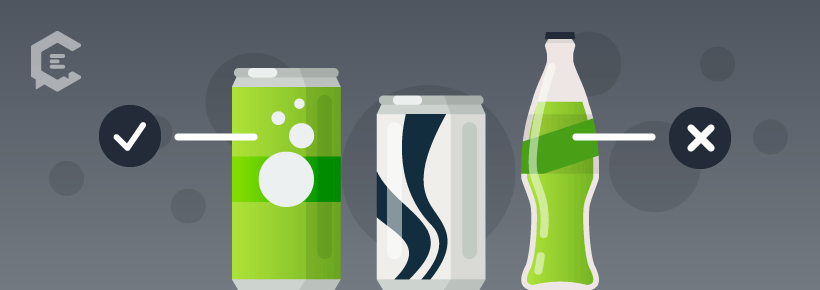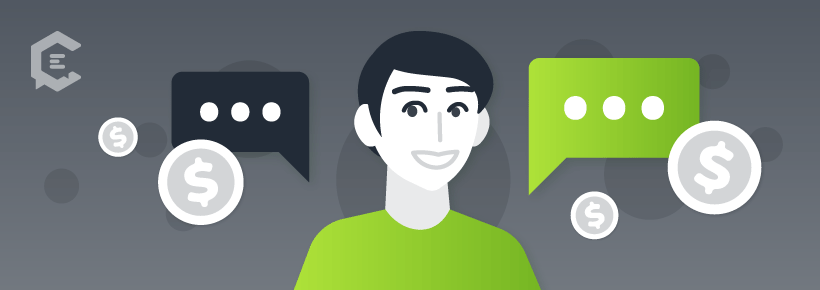In many professional marketers’ opinions (including mine!), creating buyer personas is one of the most fun parts of brand strategy. Buyer personas are fictional representations of target customers, that are created by your marketing team to personify a customer segment. Besides brainstorming with the marketing team and other client-side people, another key exercise for creating buyer personas is the interview.
Generally, it’s a good practice to have conversations with many past and current customers as well as prospects. A typical interview starts with basic Q&A about the position the interviewee holds, what industry they’re in, some personal background, and questions on what influences them.
It’s easy to start imagining what your ideal customer likes, what they do for hobbies, what their home life looks like, and why they’d like your product.
The slippery slope of this, though, is that a lot of marketers tend to get too into the creative detail (Millennial Pete wears Untuckit shirts to his ad agency job) without getting to the essential questions that uncover…
- Which people may need or want your product?
- What can you do to better serve them?
- What have you been getting wrong so far?
Deeper exploratory questions are often kept within one section of a buyer persona interview. However, those questions are often the most important ones.
6 Buyer persona questions that will uncover your target market’s needs, values and priorities.
Let’s use rental car companies for an analogy. If a person wants a rental car, there are several rental car providers they can turn to — and all of the providers will offer essentially the same lineup of products, with some variance in brands, for pretty similar terms.
So what is it that causes people to choose one over the other? The first and obvious answer is price, but there are other variables beyond the daily rental rate that cause people to pick a favorite.
People choose favorites that address and meet other needs, such as:
- Personalized care (addressing the need to feel seen, heard, looked after)
- Efficient service (making good use of time, and avoiding frustration)
- Consistency (a reliable experience no matter where in the world it happens)
If you’re in an industry that’s crowded with competitors that all are similar in terms of price and overall products, learn about your current/potential customers’ underlying needs and values, and make them part of the brand personas you market to.
1. What does this person want or need that my brand can provide?
Look for the underlying need that guides this person’s actions and decisions. Not just in the immediate sense of what do they need to get done this week, but on an ongoing basis — what are they trying to accomplish?
For a social media manager, the urgent frustration might be that their current social management tool isn’t integrating with Facebook anymore. But the long-term need might be that they need to have a reliable tool for managing 20 accounts on four different platforms.
They might be planning to post to Facebook Manager directly or phase out Facebook when possible. So if you focus only on the urgent frustration — i.e. how your product currently works with Facebook — you might miss the bigger picture which is that they need a tool that can handle all the OTHER platforms and do it at scale.
2. What challenges/problems in the person’s life is your product hopefully solving?
A lot of CPG brands and startups focus on “form over function” to their own peril. Their marketers are obsessed with cool packaging, styling details, putting together campaigns with the best-looking models and influencers. They try to create a mood, rather than focusing on the problem the product is supposed to solve. The biggest example of the past year is WeWork’s infamous downfall.
It’s not a tech company, it’s a real estate company! proclaimed dozens of journalists. As a real estate company providing a specific product, WeWork solved a lot of small business owners’ problems related to the traditional office space rental paradigm.
Trying to brand itself as a tech startup was the problem because their product was not a tech solution. Many short-term and shared office rental spaces are still doing fine as WeWork falls apart because they branded themselves as a flexible office space solution and targeted customers who needed that.
Another way that B2B companies, especially security and SaaS, fail to speak to their target customer is by falling into a jargon trap. They can’t clearly and succinctly explain what their product does, so they load the marketing materials with technical terms and jargon that they hope conveys a message. What they SHOULD be doing is pinpointing the specific problem that their target customer has and explaining clearly how their product can solve that problem.
3. What is most important in your buyer’s life, and how can you help them get more of it?
This usually boils down to essentials. People need to save time, stress less, spend less money, feel safe, feel like they’re being clearly communicated to… there are a few others, but rather than attempting to list them, I suggest you go through the exercise of asking every person you’re interviewing. And then, figure out how your product can help them make gains where it’s important to them.
For the analogy here, let’s look at health drinks. There are an endless number of them on the market, especially if you count all the ones made fresh at gyms and smoothie bars. The reason that there are so many, and yet people continually make their own variation, is that the ingredients are thought to serve different important needs.
- Drink A may be a performance booster. A person might choose it because they want to do things in less time so they have more time for other things.
- Drink B may boost the immune system. A person takes this when they’re worried about getting sick.
- Drink C may be a protein shake. A person might drink it instead of eating a meal.
If someone comes into a health food venue saying, “I just ran a half-marathon yesterday and I need to replenish nutrients,” the person at the counter might ask them how they’re feeling overall, before making a recommendation. They might suggest one drink with an added shot or infusion of another ingredient. They would not recommend the same drink to every customer, because people’s bodies react differently to strenuous exercise, and people will need different things.
Following this logic, you wouldn’t position your menu of services the exact same way to three different buyer personas who each have their own priorities.
4. What about your product – or another product in your category – gets your interviewee’s attention?
Sometimes breaking through the noise is a matter of great advertising, but more often, it’s because some piece of the messaging really resonated with a person. Car companies tend to have campaigns that fall squarely into either of the two approaches.
Some commercials are created for the “wow” factor, while others are meant to grab the viewer by their heart. Case in point, Subaru’s entire creative strategy, as exemplified in 2019 by the “For All You Love” spot.
It isn’t necessary to have a broadcast TV budget to get potential customers’ attention. What IS necessary is to understand what stands out to them, what speaks to them, and what they find memorable — if not about your product, then about any product in the category.
5. If this person is already a customer, what do they like about your product?
At some point in an interview, it’s definitely important to go through customers’ experiences with your product and company. However, this Q+A should be more customer-centric than product-centric. Going down a checklist of 15 product features and asking the customer their opinion of each isn’t going to get you great information if the customer has only used two of 15 features.
It also might confuse the customer. Instead, ask searching questions about how well your company has supported your customer, what aspect of service or product experience stands out, and why they chose your product over all the other options out there.
6. What about your product does not meet their needs?
Experts remind you that it’s equally important to talk to customers who were not 100 percent satisfied with your product and to welcome candid feedback on what they didn’t like. Exploring how a product didn’t meet expectations or didn’t function as expected can help all teams create better functionality, better user experience and better customer support in the future.
Interested in learning more about developing great B2B personas? Our experts have more to say.






